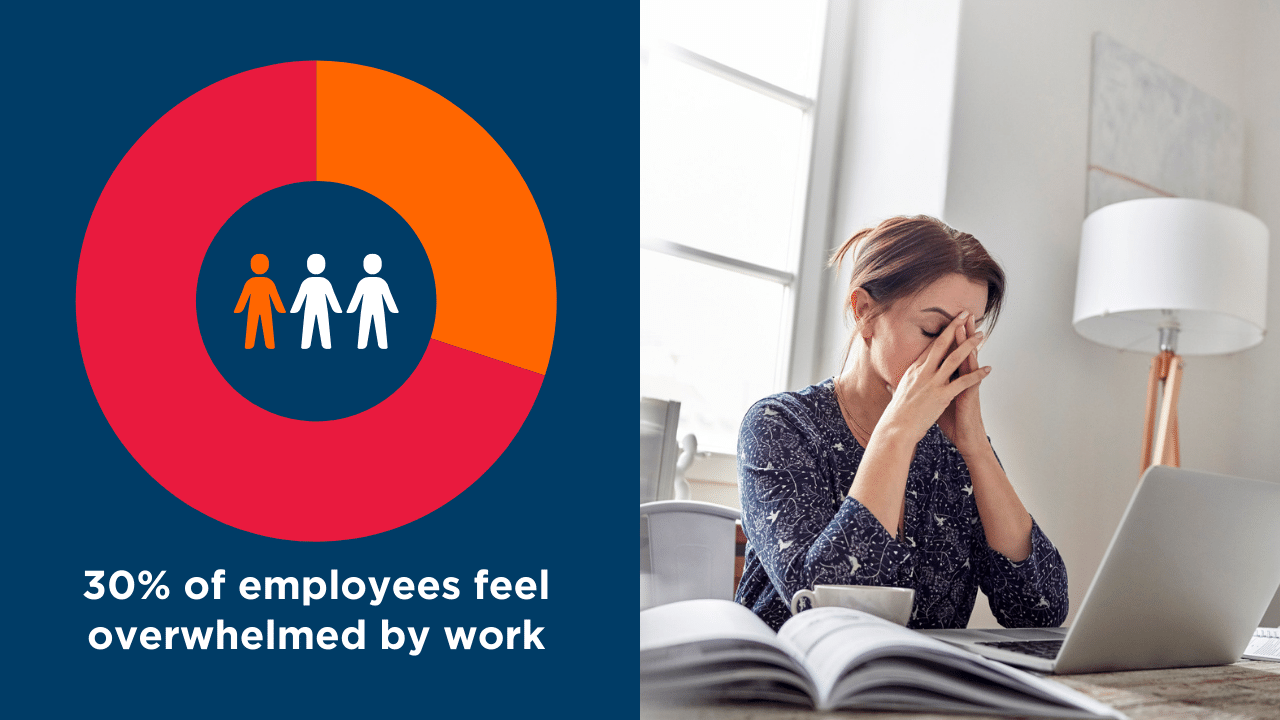
Employee anxiety, stress, depression and burnout are running rampant across organizations and industries. Inc. magazine reports employee unhappiness has jumped to its highest levels on record.
Researchers say a permanent state of crisis, dubbed “permacrisis,” is increasing mental health challenges. This permacrisis mentality started with the global pandemic and continues with environmental disasters, political unrest, international wars, inflationary concerns, fears of artificial intelligence and other ongoing challenges.
Mental health is a complex issue without simple solutions. However, organizations that ignore the current challenges risk employee well-being and business success, notes the human resources association SHRM.
Ignoring Mental Health Could Come at a High Cost
Recognizing and addressing workplace mental health challenges can help you limit turnover, increase productivity and combat higher healthcare costs.
Workplace mental health particularly impacts turnover rates. According to SHRM, 49% of employees whose job worsened their mental health over the past six months are likely to search for a new job. This number compares with 23% for those whose job doesn’t affect their mental health and 14% whose job enhances their emotional well-being.
Younger employees are even more likely to focus on mental health benefits, indicating the growing significance of this issue. More than 60% of Generation Z employees and nearly 50% of millennials would be likely or very likely to leave their current jobs for an organization that offered better mental health benefits.
SHRM reports that 30% of employees feel overwhelmed by work. And 29% feel anxious once a week or more.
Top workplace factors affecting mental health include:
- Workload
- Compensation
- Staffing levels
- Management conflict
- Lack of professional development
Solutions to Address Workplace Mental Health
The good news is your employees want your help addressing mental health issues. And you can make a measurable difference.
Compared with last year, 45% of employees expect more employer mental health support. Research shows your efforts can positively impact your employees’ well-being and performance. More than 30% of employees say their job has improved their mental health, according to SHRM.
Employees cite paid or unpaid time off as the most helpful mental health support. They are also seeking affordable and accessible mental health coverage in health care benefits. Another top choice is free or subsidized virtual mental health care resources.
SHRM also reports employees want more control over their schedules, including flexible start and stop times, part-time roles, job-sharing opportunities, remote and hybrid roles, and breaks during the workday.
In addition, the following organizational factors can improve employees’ mental health:
- Meaningful, purpose-driven jobs
- Reasonable workloads
- Fair pay
- Career paths
- Social connections
- Work-life balance
- Psychological safety
A Multidimensional Approach
For an issue as complex as mental health, there isn’t a single solution. SHRM recommends a multidimensional approach. Offerings to improve mental health may include:
- Paid mental health days
- Yoga and mindfulness classes
- Employee assistance programs
- Mental health apps
- Support groups
- Mandatory mental health training for employees and supervisors
- Mental health education and workshops
Talk to your benefits adviser to learn more about the growing importance of workplace mental health. They can help you examine your current benefits offerings and potential solutions for improving employee well-being.
About Wedgwood Insurance
Wedgwood Insurance has offices in St. John’s & Corner Brook and is Newfoundland & Labrador’s largest independent insurance broker. We provide straightforward home, auto & business insurance advice.
With over 255 Google My Business reviews, experience the Wedgwood difference with expert advice from our dedicated team. We ensure that every client has the coverage that best suits their needs through upfront complimentary consultations and midterm reviews.
Contact Us






